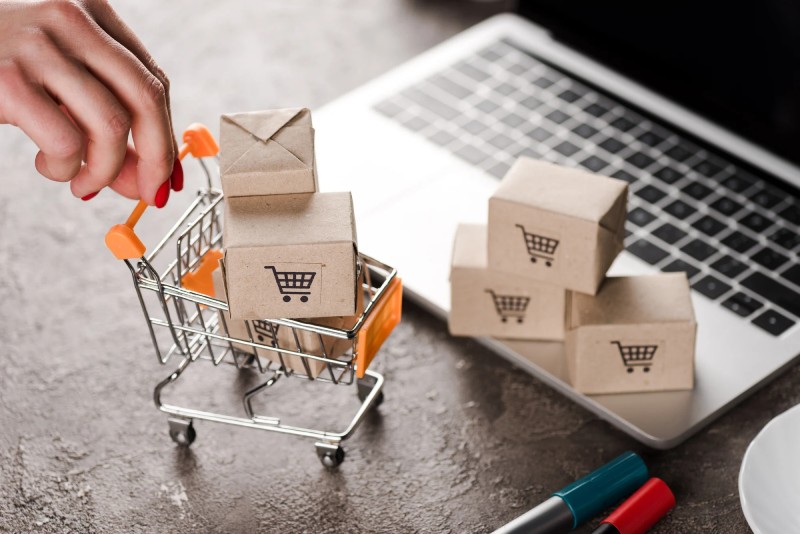
E-commerce businesses can benefit greatly from flexible packaging, which is a rapidly expanding area of the global packaging industry. Cost-effectiveness, efficiency, and lightweight characteristics are among its benefits; these are essential for effective shipment. Flexible packaging is also more environmentally friendly because it uses less energy in its manufacture and delivery, minimizes product waste, emits fewer greenhouse gas emissions, and takes up less landfill space.
E-commerce companies can choose sustainable packaging because of flexible packaging’s efficient use of resources. Lowering environmental effects is mostly attributed to its lower energy use and little waste creation. The market’s projected expansion during the forecast period is driven by these qualities, which are in line with the rising consumer demand for environmentally friendly packaging solutions.
Market trends are being influenced by customer preferences for sustainable packaging options as they grow more environmentally conscious. In response, the packaging sector is developing technologies meant to ensure the integrity, safety, and hygienic practices of products. It is anticipated that these advancements will have a major impact on market growth in the upcoming years.
The global market for flexible packaging used in e-commerce is expanding due to a few causes. The emergence of e-commerce platforms and consumer preferences for lightweight and convenient packaging are two important factors. Furthermore, consumers are becoming more conscious of sustainability, which is driving up market expansion. To ensure the sustainable use of plastics, major industry companies are making significant investments in environmentally friendly packaging techniques.
The flexible packaging market for online retail is expanding at an amazing rate. The market is expected to increase at a compound annual growth rate (CAGR) of 8.50% from 2024 to 2033, reaching an estimated market value of USD 72.45 billion by 2033 from USD 32.51 billion in 2023. Flexible packaging is quickly taking the lead as the best option for e-commerce applications because of its efficiency, adaptability, and sustainability.
The development of sustainable packaging materials is the primary emphasis of major market players. In addition to addressing sustainability concerns, these expenditures improve flexible packaging’s allure in the e-commerce industry. The growing significance of sustainable packaging solutions is reflected in the anticipated size of the global packaging market, which is expected to rise at a CAGR of 3.16% between 2023 and 2032.
Convenience is very important to consumers in the fast-paced world of today. Customers should be able to swiftly and simply find and obtain the things they need on the perfect e-commerce platform. Because they save customers time, features like curbside delivery, home delivery, and click-and-collect alternatives are becoming more and more common.
The increasing use of smartphones is creating new avenues for marketers to interact with consumers. In the future, more than 50% of e-commerce transactions are anticipated to be made using mobile devices. This change emphasizes how crucial mobile-friendly packaging and marketing tactics are.
Social media has become an essential medium for consumers to engage with brands and learn about new offerings. Voice commands are only one example of the innovations that let customers use smart devices and apps to automate orders from e-commerce sites, track transactions, and submit orders. The way that e-commerce and social media are integrated is changing customer behavior and packaging requirements.
Currently, one of the most popular e-commerce trends is personalization. When shopping with a customized experience, customers are more ready to spend. Online retailers can provide customers with customized product recommendations and unique offers by utilizing data from their social media activity, prior purchases, browser history, personal information, and preferences. The need for flexible packaging options that support customized products is being driven by this trend.
The Asia-Pacific area accounted for 39.75% of the market in 2023. This supremacy is ascribed to the region’s booming e-commerce industry, fast urbanization, economic development, and rising internet penetration. These reasons are driving the growth of flexible packaging in Asia-Pacific, which makes it an important region for market expansion.
Throughout the forecast period, the North American region is anticipated to increase at a CAGR of 7.95%. The existence of significant companies, the strong need for convenience among consumers, and strict sustainability rules are the main drivers of this growth. It is anticipated that North America’s emphasis on environmentally friendly packaging solutions will have a major impact on the market’s overall expansion.
Instagram creators now have a new tool to try if they're searching for a free… Read More
A free tool to help you boost local SEO and attract more clients is your… Read More
In today’s fast-paced digital world, online shopping has become more than just a convenience, it's… Read More
In today’s hyper-digital environment, social media is more than a marketing channel—it’s a brand’s identity,… Read More
Todd Barrow is rapidly carving out his place in the country music spotlight. Born and… Read More
Bangalore, often dubbed the Silicon Valley of India, is a city that seamlessly blends technological… Read More